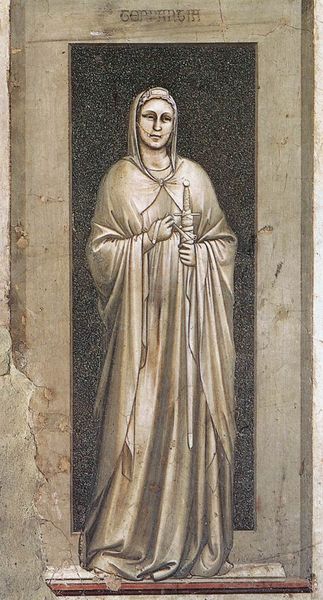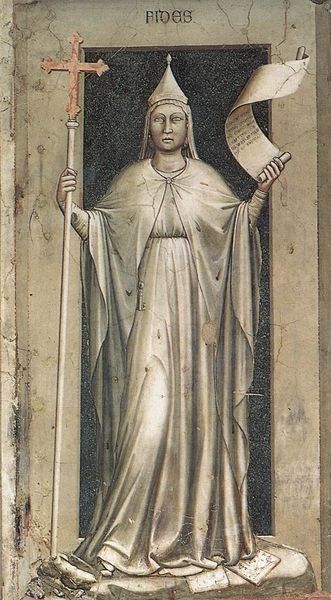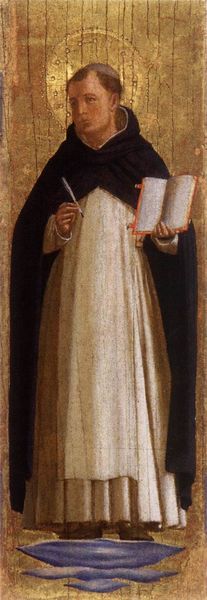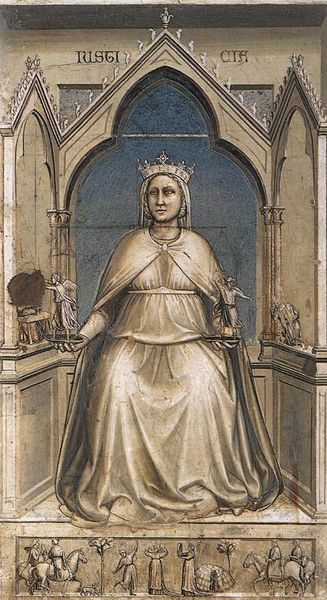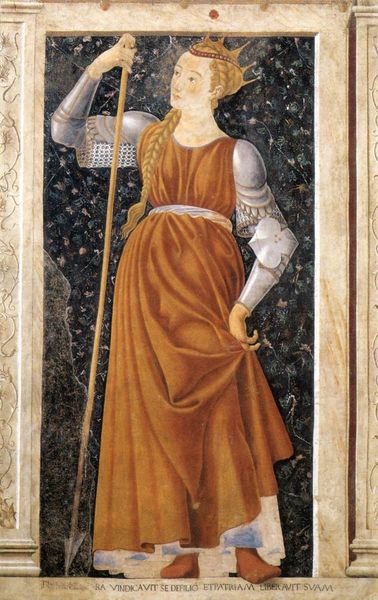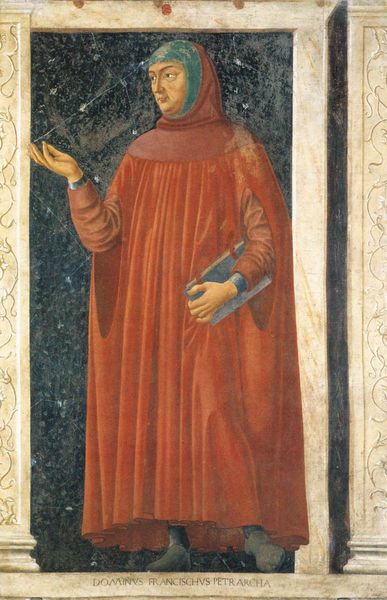
fresco
#
portrait
#
medieval
#
fresco
#
christianity
#
history-painting
#
academic-art
#
italian-renaissance
#
early-renaissance
Copyright: Public domain
Curator: Here we have Benozzo Gozzoli’s fresco depicting St. Monica, created around 1465. It resides here in the Sant'Agostino Church in San Gimignano. Editor: There's a stillness, almost a sadness about her. It is certainly an image constructed to provoke reverence, with a quiet and simple palette to give depth to its subject. Curator: Precisely, the fresco technique would have been very deliberate – layer upon layer of pigment worked into wet plaster, each one influencing the light and shadow. This reflects the careful consideration for artistic labor, and that art wasn’t made by "genius" out of thin air. It involved material costs, and was very much a collective endeavour when we factor in assistants. Editor: I see how those practical processes dictate much of the image's aesthetic value. However, note the exquisite harmony achieved through compositional balance and color distribution. The halo of course immediately positions St. Monica within Christian iconographic tradition. Her book acts as a visual and compositional focal point. Curator: Well, and the book situates her within a very particular historical and socio-political role – that of literacy, sacred learning and religious dogma being within the purview of a limited group, a control that helped form power structures. And looking at this mural within the broader scope of Christian art, the production of imagery was highly important when few people had the ability to read or write. Editor: Certainly the societal context of art production and reception must be considered. Yet what this image offers—apart from such analysis—is an almost archetypal rendition of serene humility, framed beautifully by those striking shades of burgundy and earthy greens behind her. Curator: For me, those muted colours seem suggestive of earthly elements of fresco production - the grinding of ochre pigments perhaps, a reference to labor. Editor: A fine consideration. In any case, "St. Monica," like any successful portrait, encourages contemplation that reaches far beyond a single moment.
Comments
No comments
Be the first to comment and join the conversation on the ultimate creative platform.

